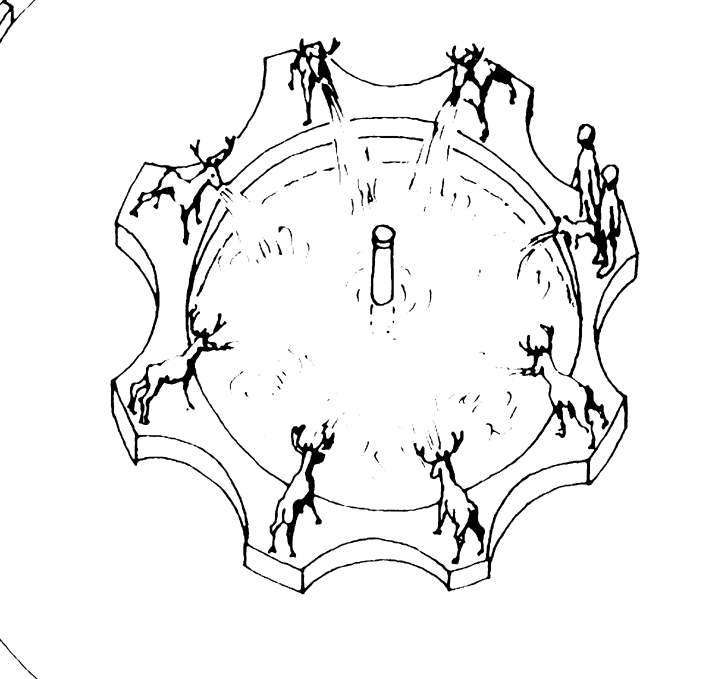Swedish Research in
San Lorenzo in Lucina
(Rome)
- The Transformationsof a Late Antique
Roman Quarter
ROMAN AND
EARLY CHRISTIAN
PHASES
Made by: Olof Brandt
Swedish Institute in Rome
Web page:
http://www.svenska-institutet-rom.org
Via Omero 14
I-00197 Rome, Italy
E-mail: isvroma@vatlib.it
| AN EARLY CHRISTIAN BAPTISTERY | The baptistery |
| Early Christian baptisteries | Early christian texts about baptism |
| The washing of feet after baptism | Ambrose writes about feet washing |
The Early Christian Baptisteries of Rome
A baptistery (Greek baptisterion,
"room where you dip in water") is a building where you baptize,
that is, where the Christian initiation is celebrated. The term "Early
Christian" usually covers the first Christian centuries up to the year
600 AD, which more or less is the period we still can define as "Roman"
and not "Medieval". During this period, the baptisteries often consisted
of a 2-4 m broad basin, up to one meter deep, often circular or octagonal,
in a square or octagonal building close to the church.

Towards the end of the fourth century the majority of the population of Rome embraced the new religion. It became necessary to build new baptisteries , for all those who wanted to be baptized during the baptismal liturgies twice a year, one at Easter and one at Pentecost. New baptisteries for a new, Christian RomeTowards the end of the fourth and the early fifth century, 25 smaller churches (tituli) were built in different Roman quarters. Of course they were much less spectacular than that at the Lateran. One of them, today known as San Lorenzo in Lucina, is still used by a parish after more than 1500 years. Since 1993, the Swedish Institute for Classical Studies in Rome has studied the baptistery and other aspects of this church.Several among the 25 "titulus" churches
still exist, but only some of their baptisteries have been found, many
of them only recently: San Crisogono, San Marcello al Corso, Santa Cecilia
in Trastevere, San Clemente, San Marco, San Lorenzo in Lucina (and Santa
Croce in Gerusalemme which is not among the 25 titulus churches) . These
new discoveries have led to e new interest in this kind of building. The
baptisteries played an important historical role, because it was in their
basins that most common Romans recieved Christian baptism in the fifth
century and their children after them. These buildings thus had a certain
importance in the religious changes between Roman Antiquity and the Middle
Ages. The interest in the baptisteries has also grown together with the
general interest in Late Antiquity, a period of changes in which modern
man easily can recognize himself.
|
